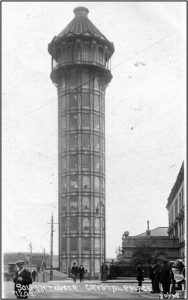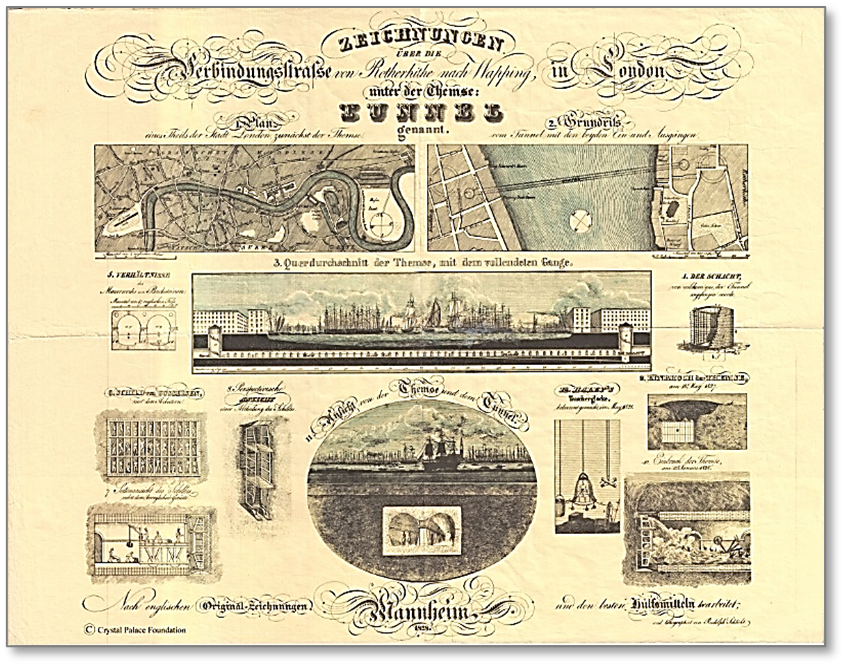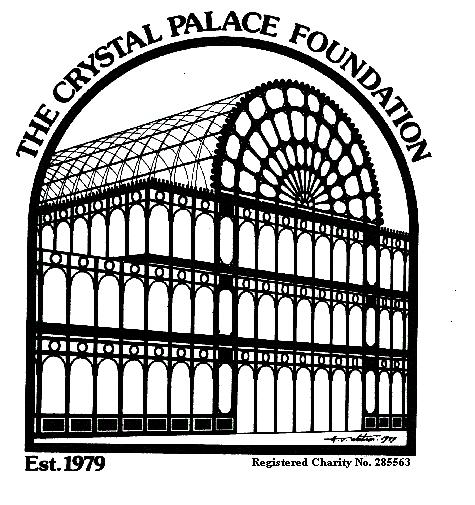In 1846, at the opening session of the Council of the Society of Arts, Queen Victoria’s Consort, Prince Albert, expressed a desire to wed high art with mechanical skill. In the 1840s he, along with Henry Cole (1808-1882) and other members of the Society, visited a number of exhibitions of industrial design in England; the impressions gained there would lead to shared and more ambitious thinking, and a decision was made that the first ever international exhibition of art and industry would be held here, in London. A Royal Commission was set up to administer the project and its initial plans were published in the London Gazette on 21st February 1850, where it was stipulated that the opening date would be 1st May, 1851 – little more than fourteen months away.
The Commission’s building committee held a design competition, but of the 245 drawings received, none were acceptable. Isambard Kingdom Brunel, a member of the committee, drew up a design on its behalf but, given its specifications, it was seen as unlikely that the building could have been completed before 1st May. It was Joseph Paxton, the Duke of Devonshire’s Chatsworth House gardener, who then sketched a design for a monumental, prefabricated glass and iron building, which could be standing on London’s Hyde Park within a year, receive exhibits from around the world, and be ready for opening on 1st May, 1851. His drawing was reproduced in the Illustrated London News on 6th July, 1850 and, having seen this, his friend Douglas Jerrold also put pen to paper. In Punch, on 13th July, he described the building as ‘a palace of very crystal’… and Paxton’s proposal was officially accepted on 15th July.
The Great Exhibition of the Works of Industry of all Nations (to give it its full name), held in the Crystal Palace, was opened by Queen Victoria on 1st May, 1851. It was visited by over 6 million people, and the profit (£186,000) was used to purchase a parcel of land in South Kensington, where we now find our national museums and other institutions, including the Royal Albert Hall. The Crystal Palace Foundation logo depicts the 1851 building’s transept.
The Crystal Palace was never destined to remain on Hyde Park. So, following the Exhibition’s closure in October 1851 and the removal of goods and exhibits, the great glass and iron building, being of prefabricated construction was, over a number of weeks, dismantled and conveyed south by horse and wagon (said to have been at the rate of over one hundred and fifty loads a day) to a magnificent hilltop site at the then rural Penge Place in Sydenham – about six miles south of the Brunels’ Thames Tunnel. Here, under the supervision of Sir Joseph Paxton, the Crystal Palace would be rebuilt on a grander scale, framed by two great water towers, surveying the beautiful, landscaped parkland below – the place we now know as Crystal Palace Park. The Sydenham Crystal Palace was opened by Queen Victoria on 10th June 1854. The towers were required to hold and supply the water to feed the spectacular fountains on the park (said to have rivalled those of Versailles).

The towers were designed by our hero, Isambard Kingdom Brunel and, in addition to its principal use, the south tower (illustrated here from an old postcard) housed the Crystal Palace School of Engineering; it was also the location from where John Logie Baird conducted many of his experiments in television. The Palace was destroyed by fire in 1936; Brunel’s towers remained, but it was later said that they would be pointers for the Luftwaffe’s WW2 bombing raids on London so, in 1941, the north tower was demolished with explosives and the south tower, being close to houses on Anerley Hill, was taken down floor by floor. The South Tower base has recently been listed Grade II by Historic England; more at – The Crystal Palace Foundation News – September 2020 And here, you’ll see an advertising display panel, depicting Brunel’s north tower.
Further information about the Crystal Palace at – http://www.crystalpalacefoundation.org.uk/ – click on HISTORICAL ARTICLES.
Last year, the Crystal Palace Foundation was pleased to offer the Brunel Museum the opportunity to reproduce our original print of the Thames Tunnel (illustrated, © CPF), published in Mannheim in 1828.

We look forward to building a mutually valuable relationship with the Brunel Museum.
Ken Lewington, Vice Chairman, The Crystal Palace Foundation (Regd. Charity No. 285563).
If you are interested in contacting The Crystal Palace Foundation, you can email them at crystalpalacefoundation@hotmail.com

